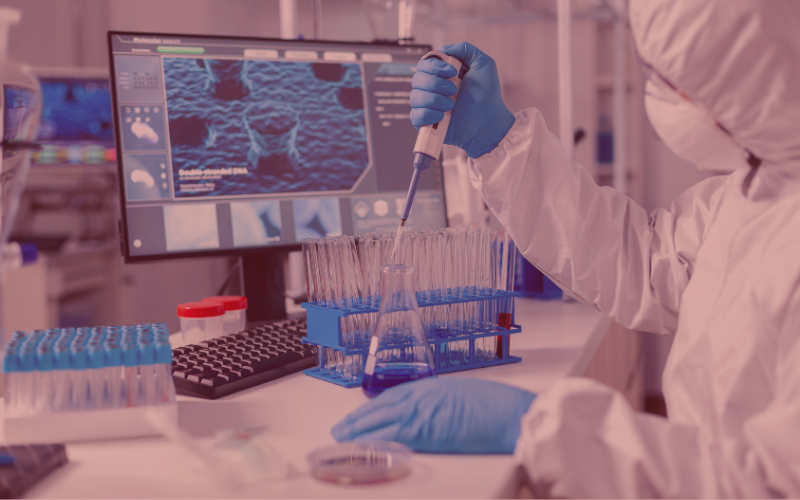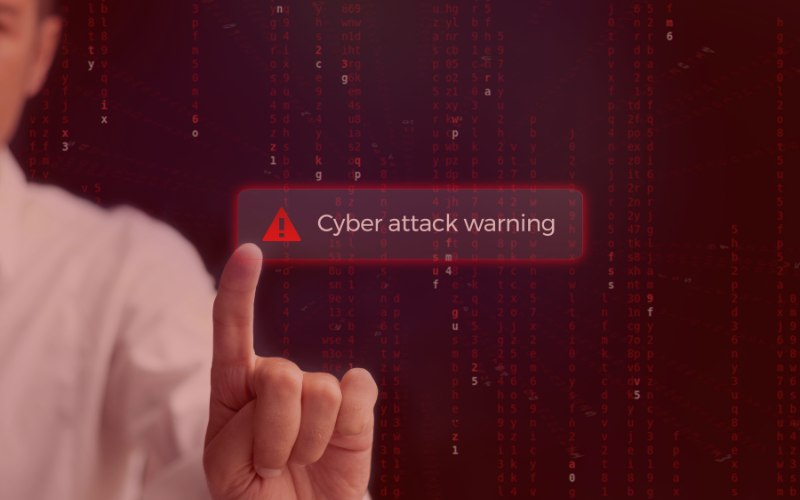Complete Guide on Cybersecurity in Biotechs and Laboratories
By Eduard Bardají on Nov 9, 2023 11:33:24 AM

In 2022, cyberattacks in the healthcare sector surged by 650%, according to Tehtris. These attacks can result not only in the loss of sensitive and confidential data about clients, patients, suppliers, collaborators, etc., but also in the potential theft of formulas or disruption of the organization's activities.
Laboratories and biotechnological companies, given the sensitivity of the data they handle and the technology they use, face a series of challenges and issues when it comes to ensuring their security.
Challenges of laboratories and companies in the biotech sector in terms of cybersecurity
At ESED, as cybersecurity specialists, having worked with various companies in the Biotech and Pharma sector, we are aware that they face internal challenges that can hinder the protection of data and the necessary cybersecurity requirements.
Sensitivity of the data they handle
Genetic and biomedical data are confidential and sensitive information. That's why they are attractive and appealing to cybercriminals. They understand the importance of preserving the security of this data and preventing it from becoming public domain, which is why they become their primary target. Obtaining them means the ability to demand a ransom for their recovery, preventing them from being made public.
Lack of specialized personnel
Often, there is a lack of specialized personnel in cybersecurity. This fact prevents proper compliance with data protection regulations and legal requirements, ultimately resulting in fines and penalties.
Lack of awareness and education
Not having specialized and technical personnel in cybersecurity means that the rest of the staff may not be aware of the types of threats they face every day, putting their research and daily tasks at risk. Human errors are the main cause of malware entering a computer system, which is why cybersecurity certifications, even at a basic level, are of utmost importance.
Do you want to train your team? We recommend our ESED Training solution.
Multiple interconnected systems and devices
Laboratories and biotechs often work with a wide variety of interconnected devices for more efficient and collaborative work. However, without proper measures, this increases the attack surface, making them more vulnerable. Furthermore, the lack of updating these software, systems, and devices is a reason for security breaches.
The main consequence of these challenges is that they turn laboratories and companies in the biotechnological sector into an easy target for cybercriminals.
What types of threats or cyberattacks are most commonly used against laboratories and biotechs?
The main goal of cybercriminals when attacking a laboratory or organization in the biotechnological sector is to steal research, formulas, patents, or other valuable intellectual property assets. To achieve this, they employ various techniques.
Phishing Attacks
These are launched through email. In most cases, they impersonate the identity of a legitimate person or corporation to persuade the recipient to click on a link or download a file. Upon doing so, it executes malware on the computer system, infecting it to gain access to its information and data.
This is the threat that currently has the highest likelihood of success for cybercriminals. Thanks to technologies like Artificial Intelligence, the type of messages used to deceive users has been perfected, making it challenging to identify them as false messages.
Ransomware Attacks
Cybercriminals use ransomware to encrypt an organization's data, preventing it from accessing the information. For its recovery and unlocking, they demand a financial ransom from the corporation.
DDoS Attacks
DDoS or Distributed Denial of Service attacks are a type of attack aimed at disabling a server, service, or infrastructure. The goal is to generate port saturation with multiple streams of information, overloading the server to the point where it can no longer provide its services.
Security breach search
Cybercriminals exploit security breaches in a system, caused by the lack of monitoring, to launch their attacks successfully.
Advanced Persistent Threats (APT)
APTs are highly sophisticated attacks specifically targeted at an organization. They can involve a wide range of tactics, such as stealthy infiltration and data exfiltration.
To protect against these cyberattacks, biotech organizations and laboratories must implement robust cybersecurity measures, including staff training, data protection, network segmentation, threat monitoring, and incident response.
Specific cybersecurity measures for laboratories and biotech companies
-
Network Segmentation: Separate laboratory internal networks from general corporate networks to limit exposure of critical systems and sensitive data to potential external threats.
-
Access and Authentication Policies: Implement strict access policies and multi-factor authentication (2FA) to ensure that only authorized individuals can access critical systems and data.
-
Data Encryption: Use encryption methods to protect data at rest and in transit, especially those related to biomedical and genetic information.
-
Regular Backups: Back up critical data regularly to ensure easy recovery in the event of a cyberattack or information loss.
-
Up-to-Date Updates: Neglecting equipment or system updates due to lack of time, knowledge, or perceived necessity, even if the computer is still functioning, jeopardizes your company's information and entire IT infrastructure. It risks rendering your team unable to work.
-
Implement Cybersecurity Strategies and Policies: Cybersecurity policies or strategies are a set of best practice guidelines that outline plans, procedures, and processes determining how an organization should protect all its information. This document should be regularly updated as technology within the company advances or evolves.
-
Implement Firewalls and Intrusion Prevention Systems (IPS): Use firewalls and IPS systems to protect the network and systems against external attacks.
-
Regulatory Compliance: Ensure compliance with all applicable regulations and standards, such as HIPAA (for medical data) or GDPR (for European data).
-
Penetration Testing: Conduct regular penetration tests to identify vulnerabilities in your infrastructure and applications before cybercriminals do.
-
Have a Disaster Recovery Plan: A Disaster Recovery Plan outlines actions and resources, both technical and human, to establish protocols of action. It determines how the company will proceed to minimize damage and restore normalcy as quickly and cost-effectively as possible.
And above all...
Cuenta con un partner tecnológico o especialista en ciberseguridad
Having a cybersecurity specialist will help you implement the measures mentioned above.
For more information on how to protect sensitive and confidential data in your organization, you can contact us with no obligation. Additionally, we offer a website analysis so you can assess its security level.
You May Also Like
These Related Stories

Problems with the computer that may indicate a cyber attack

Top cyber threats for companies in the Biotech sector



.png?width=262&height=150&name=accio-10-negre%20(1).png)

